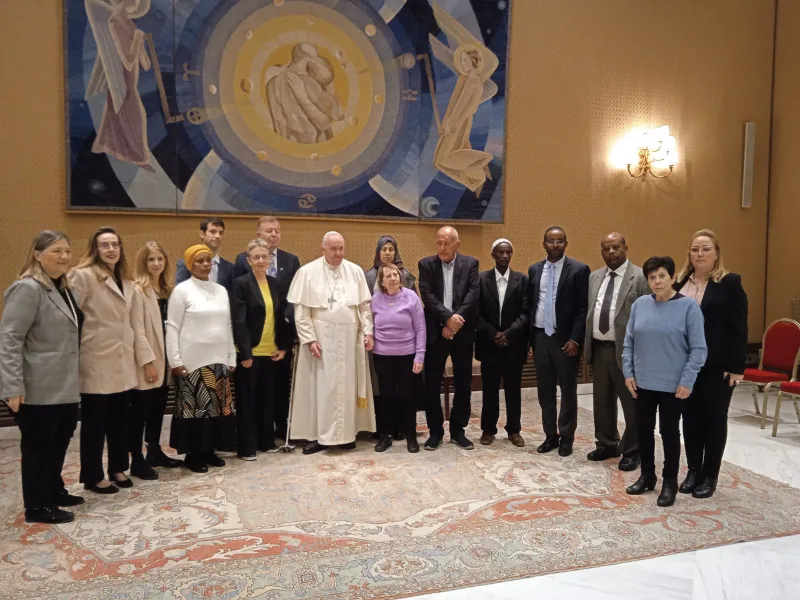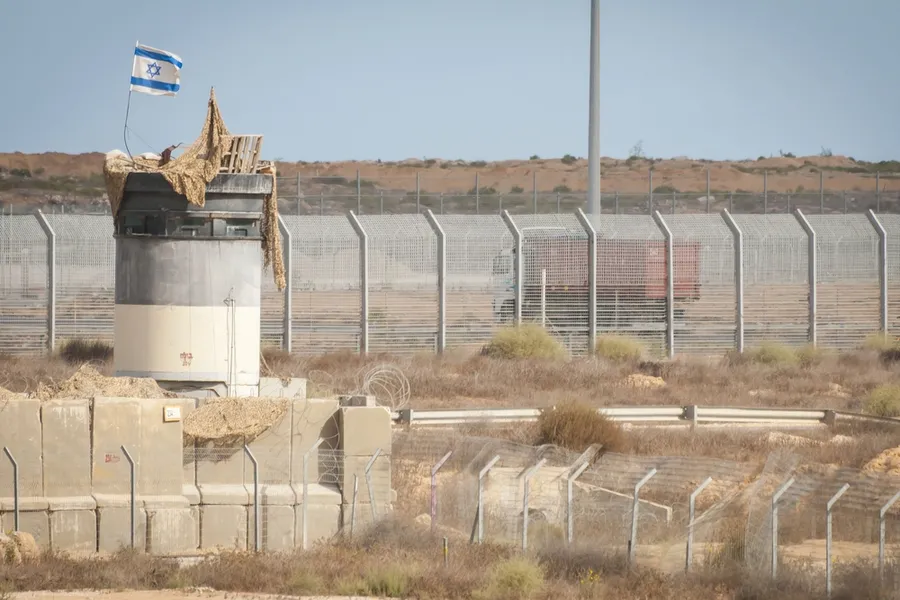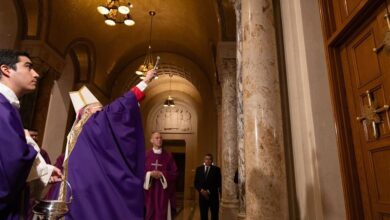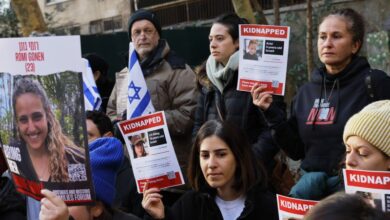Families of Israeli captives in Gaza Strip appeal to Pope Francis

 Four Israeli families who have been fighting to see their children for eight and a half years met with Pope Francis at the Vatican on Dec. 21, 2022. Two young men are still alive, kidnapped by Hamas. Two others died, but their bodies were not returned, thus preventing a proper burial, one of the Jewish mitzvahs. Three are Jews, and one is Muslim. / Vatican Media
Four Israeli families who have been fighting to see their children for eight and a half years met with Pope Francis at the Vatican on Dec. 21, 2022. Two young men are still alive, kidnapped by Hamas. Two others died, but their bodies were not returned, thus preventing a proper burial, one of the Jewish mitzvahs. Three are Jews, and one is Muslim. / Vatican Media Vatican City, Jan 8, 2023 / 03:00 am (CNA).
When, during his Christmas Urbi et Orbi message, Pope Francis once again launched the appeal for peace in the Holy Land, he probably had in his eyes the testimonies of four Israeli families who have been fighting to see their children for eight and a half years.
Two young men are still alive, kidnapped by Hamas. Two others died, but their bodies were not returned, thus preventing a proper burial, one of the Jewish mitzvahs. Three are Jews, and one is Muslim.
Pope Francis met these four families on the sidelines of the pope’s general audience on Dec. 21. The Pope listened to one family for 45 minutes, a much longer meeting than expected, and never stopped holding their hands, a mother whose son Oron Shaul has now been in the hands of Hamas for eight and a half years.
“It is so difficult to console a mother’s tears,” Pope Francis said of the encounter. The pope promised to take care of the cases to bring these four young men home, also asking for the details of the four cases in writing. The pope also reminded his guests that, on the occasion of Christmas, he had written a letter to the heads of state of the world asking them for “a gesture of clemency towards those brothers and sisters of ours deprived of their freedom” if they are deemed fit to get it.
The Shaul, Goldin, Mengistu, and al-Sayed families were in Rome for an initiative promoted by the Israeli Foreign Ministry in collaboration with the Defense Ministry to raise international awareness on the issue of Israeli hostages in Gaza. The families of the four young men were accompanied by the Israeli ambassador to the Holy See, Raphael Schutz, and the director of the Diaspora and Religious Affairs division of the Israeli Foreign Ministry, Shuli Davidovich.
Davidovich explained that “as a policy, Israel does not deal with terrorists, and therefore there have been no contacts between Israel and Hamas. But several organizations have sought contact and have sought mediation. So bringing these kids home is not a political issue, but a religious one. For this, we have come to the pope, so that he, too, can use his moral strength.”
Of course, it is a complex situation. For eight and a half years, the families, supported by the Israeli government, have appealed to all the organizations involved in the area to bring their children home.
Hadar Goldin was an Israeli army lieutenant who served in the Givati Brigade. It was Aug. 1, 2014, when Hamas kidnapped and then killed him two hours later. In doing so, Hamas violated the cease-fire recently accepted following Operation Protective Edge.
Speaking with CNA, Hadar’s twin brother, Tzur, called the meeting with the pope “very emotional.”
Since his brother was killed, he said, “we have traveled the world, we have also been to the United Nations, and now we have come to Rome. So we try to explain to the world that being able to bury my brother is a religious issue, and it is a significant religious issue.”
Tzur added that “one of the greatest mitzvahs (Jewish precepts) is to return prisoners, and souls cannot be held captive because souls are God’s.”
Hadar’s mother, Leah, hopes that, also through the institutions, pressure can be put on Hamas, counting on mutual interests, because “this is terror against families: my son is there, and this is unacceptable.”

‘My life stopped’
Pope Francis held the hand of Oron Shaul’s mother for almost the entire duration of the meeting. According to the Israeli embassy to the Holy See, Shaul fell during Operation Protective Edge Hadar. During a military action in the Gaza Strip, the soldier was attacked by Hamas against an IDF armored vehicle carrying seven soldiers and was later kidnapped. At the end of July 2014, the Israeli army declared him dead.
Shaul’s mother, Zehava, said she was particularly moved by Pope Francis’ attention to her case. The pope, she said, “gave me the feeling that I was the only one at that moment. I know he has relationships all over the world, and he promised to do his best to bring my daughter home. I told him Oron’s story.”
Oron Shaul, she said, “insisted on going to Gaza because his friends were there. There was an accident between tanks, two soldiers were injured, and there was a need to replace them. Oron volunteered first. However, the tank where he was got stuck right in front of the Hamas tunnel. I had asked Oron never to be the first to propose, but he didn’t listen to me and came out first. They fired a missile, but Oron was out of the tank, and they kidnapped him. All of his friends died on the spot.
“They showed his name tag,” she said. “From there, my life stopped.”
The situation in the Gaza Strip
The Gaza Strip is an “enclave” of the State of Palestine within the State of Israel. It is about 25 miles long and about 6 miles wide and is home to 1.4 million Palestinians. It was ruled by Egypt between 1948 and 1967 and then by Israel from 1967 to 2005.
The Gaza Strip has been claimed by Palestine, along with the West Bank and East Jerusalem, as part of the State of Palestine. In 2005, Israeli troops withdrew from the Strip, also ordering the removal of settlements and the relocation of more than 10,000 Israelis. However, Israel retained control of the airspace of the Strip, the land border between Israel and the Gaza Strip, and territorial waters.
When the National Authority took control of the Gaza Strip, it was governed by al Fatah. However, this was weakened by Hamas, the paramilitary political organization that today effectively governs the Gaza Strip, after winning local elections in 2006 and ousting Fatah in 2007.





